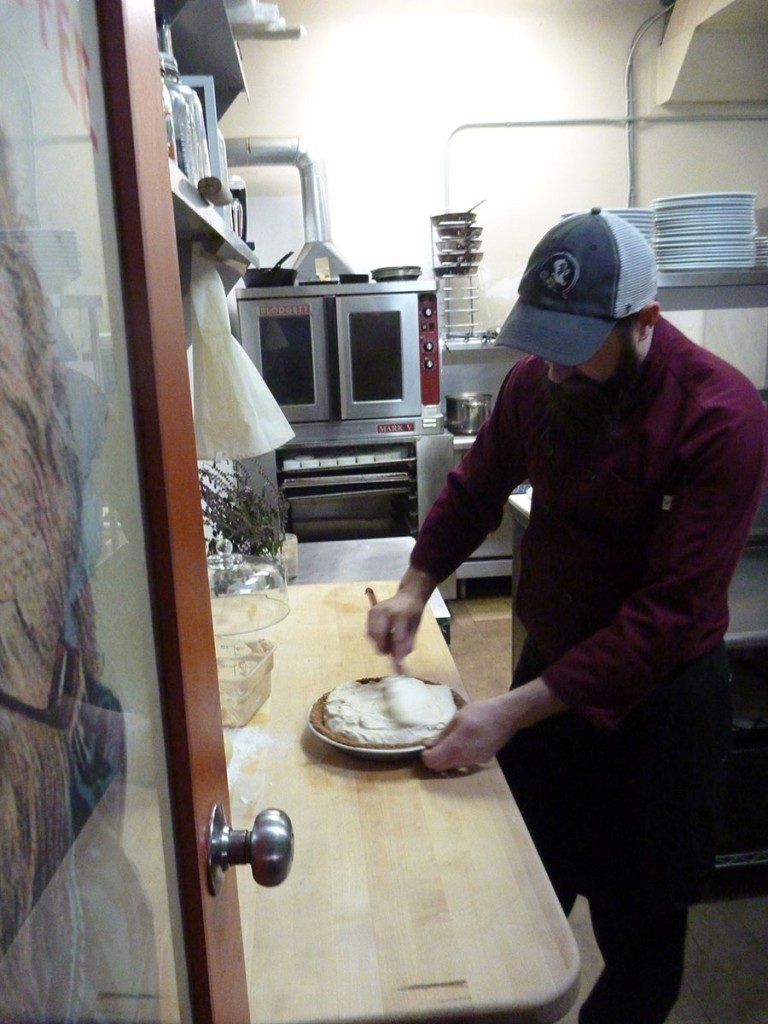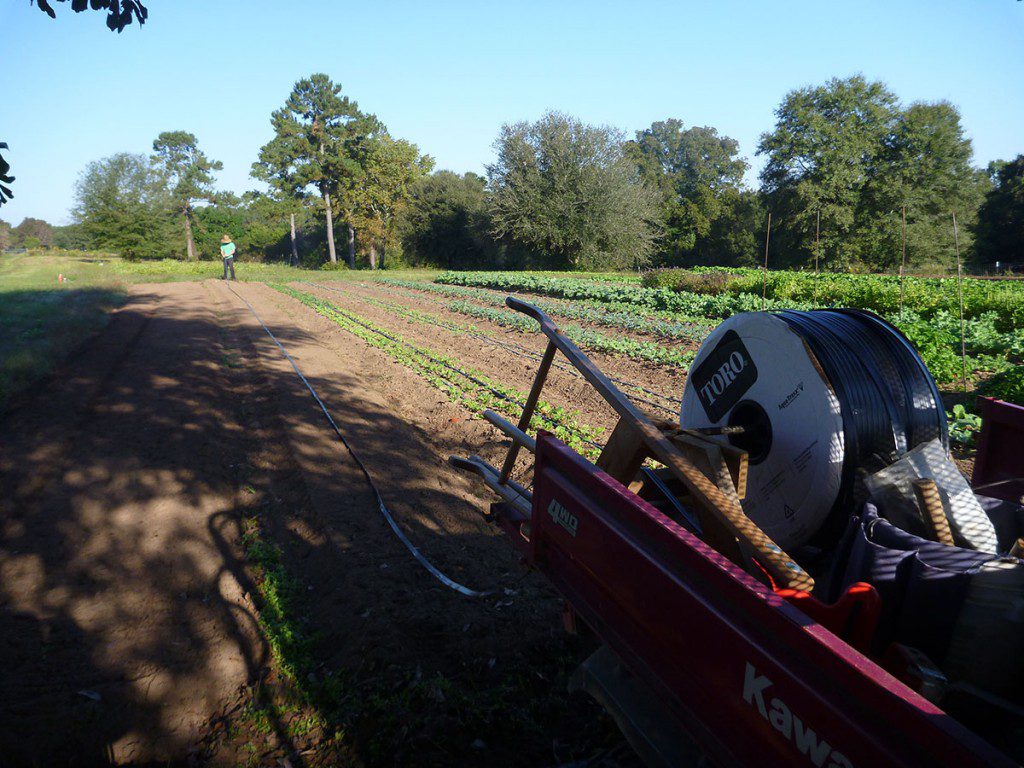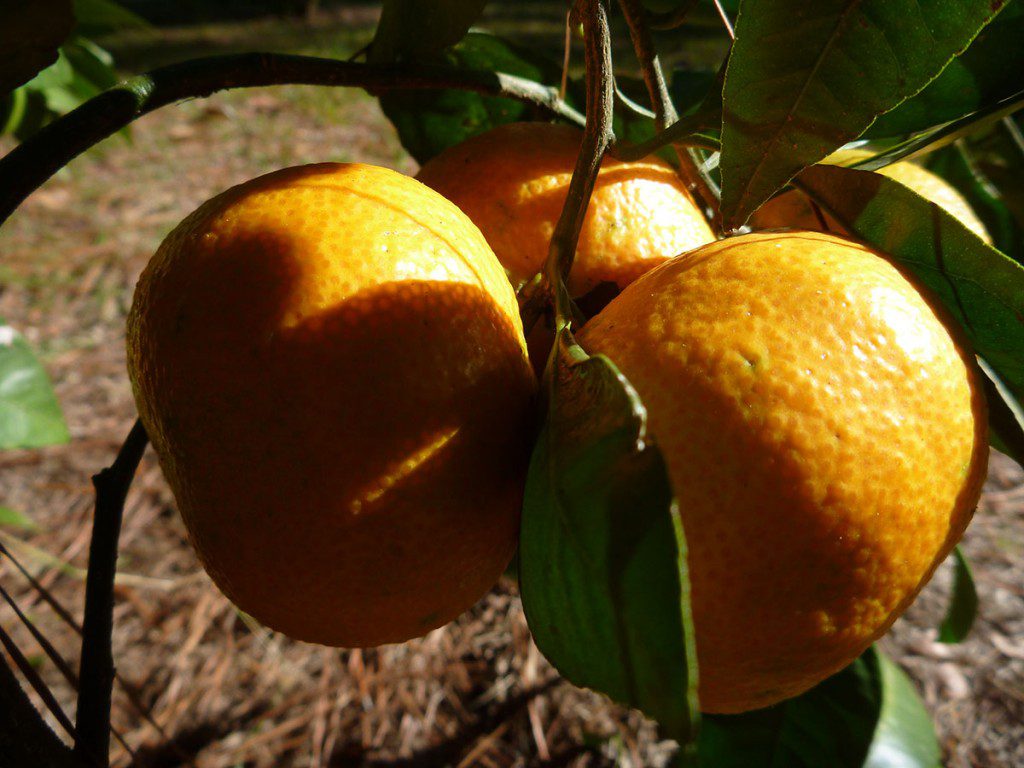Over the past couple of months we’ve made a foray into local agriculture, an industry that’s of critical importance to the ecology of our area. We’re now in the process of setting up some new adventures that get us back on the water- both salt and fresh. And of course, our EcoShakespeare segments will begin airing January 28 on Dimensions (before streaming here). We’re always looking for new ways to interact with the outdoors, and we always want to hear your suggestions for how we can accomplish this. Don’t be shy about leaving comments!
Rob Diaz de Villegas WFSU-TV

Miccosukee Root Cellar is a farm to table restaurant, buying from several local food growers. Chef Owen Hardin uses Thomasville, GA pecans to make both the ice cream filling and crust of this pie.
“Eating local means eating seasonal,” Katie Harris told me in an unused clip from her interview. That means that if you want to go full locavore, you’ll soon be saying goodbye to fresh tomatoes and yellow squash and hello to chard and broccoli. Katie co-manages the Red Hills Small Farm Alliance with Louise Divine, who we interviewed in part one of this video. Part of their public outreach is to provide recipes and seasonal calendars to consumers who may not be used to limiting themselves to food that grows within a few counties of their house. The food that will grow in north Florida will vary with our seasons, and so eating locally means adjusting to what’s available. Eating locally is one of those things that’s easy to get behind. You’re supporting the local economy. And you’re supporting the environment, aren’t you? Let’s take a closer look.
The primary environmental argument often used in favor of eating locally are the “food miles” traveled by the food. Tomatoes from a Red Hills farm may travel 20-30 miles to get to my house. Tomatoes grown in Mexico, which you may see at your grocery store of choice, have traveled over 1,000 miles by truck or plane to get here. A lot of gasoline is used to transport food around the world. A study by the Natural Resources Defense Council on the emissions of California’s imported foods found that in 2005, 250,000 tons of global warming gasses were produced by incoming food products, as much as 40,000 cars. And that’s just one state in one country.
But food miles are just one factor in the equation. A post on the Harvard Extension Blog looked at data for total carbon used in food production and found that, overall, most emissions occur from the production of food rather than their transport to market. This is especially true of meat products, which alone account for more greenhouse emissions than all cars and trucks on earth. Cows, sheep, and goats belch methane, a potent greenhouse gas, and a lot of energy goes into producing the grain they eat. That’s food miles and the fertilizer it takes to grow the grain. Which gets us to how produce is grown.

Aaron Suko, co-manager at Full Earth Farm, lays ribbon hose along an unused row. Drip irrigation uses water more efficiently than center pivot irrigation, a technique used on many large farms.
In a 2008 article in the Guardian on the “Myth of Food Miles,” green beans grown in Nigeria are presented as a greener choice for UK shoppers than their own local product. A professor they interview touts Nigerian growing methods, which don’t use tractors (all manual labor, no gas) or cow manure, and use low-impact irrigation. The Harvard Extension blog post referenced a study that showed lamb grown in New Zealand is a greener choice for UK shoppers than their own local lamb, because New Zealand lambs are pastured (eating the grass that grows on the ground) and live on farms that use hydroelectric power (This blog post from Oregon Public Broadcasting, while ultimately agreeing that grass is a greener feed for cattle, does a good job of outlining the controversy over which feed is more environmentally friendly).
While sustainable practices are not a prerequisite for membership in the Red Hills Small Farm Alliance, The farms we’ve highlighted do practice organic techniques (the lone meat producer we featured in part 1 of this video, Golden Acres Ranch, isn’t organic but aims to be “all natural”). In our Sharing Water Conference segment, we see how Katie (Full Earth Farm, Quincy) and Herman Holley (Turkey Hill Farm, Tallahassee) prepare compost intended to provide fertilization to their plants without contributing nitrate runoff to local waterways. They both use tractors for certain tasks but, as you see in the video above, do a lot of work manually as well. As Katie’s co-manager at Full Earth, Aaron Suko, says in the video, they can be efficient by planting at the right times, hoeing weeds when they’re small, and being organized. “You just got to work smarter, and not harder.” This, they tell me, is the key to small, sustainable farming.
There are advances and techniques that both conventional and organic farmers are exploring to increase efficiency and help preserve natural resources. Here are a few that we’ve covered on WFSU-TV:
- My fellow WFSU producer Mike Plummer recently visited the IFAS North Florida Research and Education Center in Marianna. There, he learned about their research into reducing methane emissions from cows. In another segment, he looks at their research into better selective breeding of cattle.
- Mike also visited the IFAS North Florida Research and Education Center in Quincy, where they are working on a sod based rotation system that aims to improve irrigation by alternating plots of bahia grass with crops. They claim that if the techniques were to be adopted, they could reduce water usage of farms along the Flint River to a degree that would greatly increase freshwater flows downstream on the Apalachicola.
 The IFAS Research Center in Quincy is also looking at satsuma oranges as a potential crop for north Florida. They are cold hardier, meaning they would perform better here than other varieties grown in the state. In fact, some Red Hills farms are already growing this Japanese variety.
The IFAS Research Center in Quincy is also looking at satsuma oranges as a potential crop for north Florida. They are cold hardier, meaning they would perform better here than other varieties grown in the state. In fact, some Red Hills farms are already growing this Japanese variety.- Red Hills farms are experimenting with rotating different crops that would help build soil. Wayne Hawthorne at Blue Ridge Farm has planted sodbuster radish in his outdoor beds. This New Zealand import has roots that are supposed to break up hard soils (like the red clay that is prevalent in our area), add a natural fungicide to the soil, and then tap into minerals deep in the soils without tilling. He sent some of his seeds to a friend working at an IFAS extension in Ruskin, Florida, where they’ll perform their own experiments.
- Both Turkey Hill and Full Earth experiment with cover crops. Full Earth’s Aaron explained to us the benefits. Cover crops are planted in plots not currently in production. Their roots keep the soil from eroding. Sometimes they plant sunflowers, which attract pollinators. They also plant legumes, which naturally add nitrogen to soil (lessening the need for added fertility).
- Also in the aforementioned Sharing Water Conference video, we visited Simpson’s Nursery, which uses Monticello’s reclaimed water and recycles water on site to reduce aquifer withdrawals. This is by no means a small local farm (every Red Hills Farm together might fit in its 1400 acres), and its water usage is considerable.

